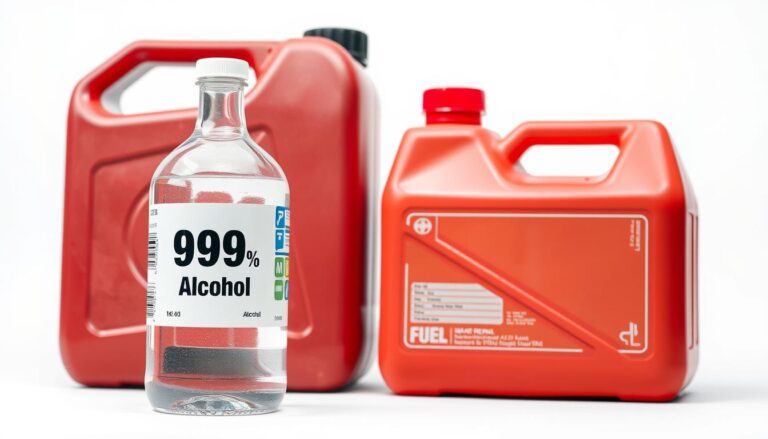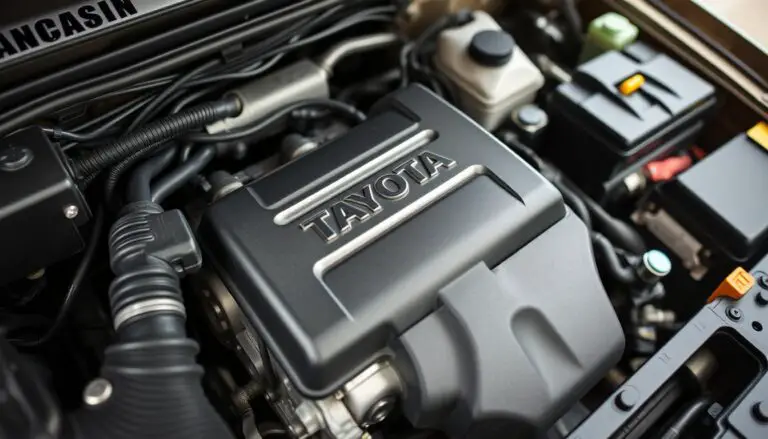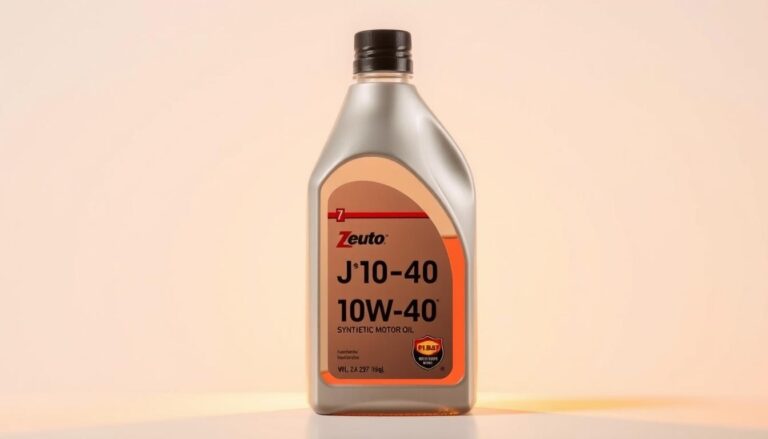The selection of an appropriate automatic transmission fluid is paramount for the vehicle’s performance and longevity. The plethora of options necessitates a thorough comprehension of their distinctions.
The ongoing discourse between Dexron VI and Dexron HP pervades the automotive community. Both are formulated for automatic transmissions, yet their unique attributes differentiate them.

In the examination of Dexron VI and Dexron HP, it is imperative to scrutinize their technical specifications, applications, and performance attributes. This analysis will elucidate which fluid is most conducive to a specific vehicle’s needs.
Key Takeaways
- Understand the key differences between Dexron VI and Dexron HP.
- Learn about the technical specifications and applications of both fluids.
- Discover which fluid is optimal for your vehicle’s performance and longevity.
- Compare the performance characteristics of Dexron VI and Dexron HP.
- Make an informed decision based on a comprehensive comparison.
Understanding Automatic Transmission Fluids
The intricacies of automatic transmission fluids are pivotal for achieving peak vehicle performance. These fluids are indispensable for the seamless operation of a vehicle’s transmission system, influencing variables such as fuel efficiency, transmission durability, and the overall driving experience.
The Role of Transmission Fluids in Vehicle Performance
Transmission fluids perform several critical roles within a vehicle, including lubrication, cooling, and ensuring smooth gear transitions. The selection of the appropriate transmission fluid is paramount for optimal vehicle performance, as it minimizes friction between moving components, thus preventing wear and tear. ATF also plays a crucial role in cooling the transmission system, which is essential for its longevity.

Evolution of Dexron Fluids
The progression of Dexron fluids has been substantial, adapting to the evolving needs of contemporary transmission systems. From the inception of Dexron formulations to the advent of Dexron VI and Dexron HP, the advancements are evident in viscosity index, thermal stability, and compatibility with transmission materials. This progression underscores the continuous endeavor to elevate vehicle performance and transmission longevity.
Importance of Using the Correct Fluid
The selection of the correct transmission fluid is of utmost importance for upholding the vehicle’s warranty, ensuring optimal performance, and averting potential damage to the transmission system. Utilizing an incorrect fluid can result in diminished transmission lifespan and compromised vehicle performance. Thus, it is imperative to refer to the vehicle’s manual or manufacturer’s guidelines when choosing a transmission fluid.
What is Dexron VI?
Dexron VI marks a pivotal leap in the realm of automatic transmission fluid technology, delivering enhanced performance and protection. It is crafted as a high-performance fluid, tailored to address the sophisticated demands of contemporary automatic transmissions within General Motors’ vehicle spectrum.
Technical Specifications
The technical parameters of Dexron VI include an elevated viscosity index, ensuring peak performance across a broad spectrum of temperatures. It showcases enhanced friction durability, guaranteeing consistent and seamless shifting. Further, Dexron VI exhibits better thermal stability, retaining its properties under extreme operating conditions.
General Motors has subjected Dexron VI to exhaustive testing, affirming its compliance with the most stringent quality and performance standards. Industry connoisseurs concur, opining that Dexron VI has established a new paradigm for automatic transmission fluids, excelling in viscosity index and friction durability.

Applications and Compatibility
Dexron VI is compatible with a plethora of General Motors transmissions, positioning it as a versatile option for a broad vehicle spectrum. Its compatibility spans various models, including those with intricate transmission systems. The fluid is engineered to integrate harmoniously with the vehicle’s transmission, ensuring smooth shifting and optimal performance.
Manufacturer Recommendations
General Motors advocates for the utilization of Dexron VI in their vehicles to guarantee optimal performance and transmission longevity. The manufacturer underscores the criticality of employing the correct fluid to uphold the vehicle’s warranty and avert potential damage. General Motors explicitly states, “Utilizing the correct transmission fluid is imperative for the longevity and performance of your vehicle.”
What is Dexron HP?
Dexron HP emerges as the quintessential transmission fluid for high-performance vehicles. Developed by General Motors, it caters to the sophisticated demands of contemporary automotive technology.
Its technical prowess is evident in its low-temperature pumpability, wear protection, and thermal stability. These attributes guarantee that vehicles utilizing Dexron HP operate at peak efficiency, regardless of environmental conditions.
Technical Specifications
The technical specifications of Dexron HP are meticulously crafted to deliver unparalleled performance. Key attributes include:
- Improved low-temperature fluidity for smoother cold starts
- Enhanced wear protection for longer transmission life
- Superior thermal stability to maintain performance under extreme temperatures
A comparative analysis of Dexron HP’s technical specifications against other transmission fluids is presented in the subsequent table:
| Specification | Dexron HP | Dexron VI |
|---|---|---|
| Viscosity at 100°C | 6.0 mm²/s | 6.3 mm²/s |
| Pour Point | -40°C | -38°C |
| Flash Point | 200°C | 198°C |
Applications and Compatibility
Dexron HP is tailored for a broad spectrum of vehicles, including those with high-performance demands. Its compatibility spans numerous GM and non-GM models, positioning it as a versatile transmission fluid solution.
Manufacturer Recommendations
General Motors advocates for Dexron HP in vehicles necessitating high-performance transmission fluids. It is imperative to refer to the vehicle’s owner’s manual or manufacturer’s guidelines to ascertain compatibility and ensure optimal performance.
By grasping the technical specifications, applications, and manufacturer recommendations for Dexron HP, vehicle proprietors can make informed decisions regarding their transmission fluid requirements.
Dexron HP vs Dexron VI
For vehicle owners aiming to enhance transmission performance, discerning the distinctions between Dexron HP and Dexron VI is paramount. Both are crafted for high-performance applications, yet their unique attributes differentiate them.
Viscosity Comparison
The viscosity profiles of Dexron HP and Dexron VI represent a critical distinction. Dexron HP boasts a superior viscosity index, rendering it more adept for extreme temperature conditions. This attribute ensures Dexron HP retains its lubricating efficacy across the spectrum of temperatures, potentially offering enhanced transmission protection in demanding environments.
Conversely, Dexron VI, though exhibiting excellent viscosity stability, is formulated to strike a balance between fluidity at low temperatures and lubrication at high temperatures. The viscosity disparity between these fluids may influence vehicle owners’ selections, contingent upon their typical driving scenarios.
Chemical Composition
The chemical formulations of Dexron HP and Dexron VI are engineered to deliver superior wear protection and friction durability. Though the specific additives and their concentrations diverge, Dexron HP incorporates a unique additive blend to augment its performance in extreme conditions.
Dexron VI, conversely, is formulated to excel in oxidation stability and low-temperature fluidity, catering to a broad spectrum of driving conditions. The chemical compositions of both fluids are meticulously crafted to fulfill the exigencies of contemporary transmissions, ensuring uninterrupted operation and extended lifespan.
Performance Characteristics
The performance attributes of Dexron HP and Dexron VI are intricately linked to their formulations. Dexron HP is renowned for its capacity to maintain performance in extreme temperatures, positioning it as an exemplary choice for vehicles subjected to extreme cold or heat.
Dexron VI, while also adept at performing across a variety of temperatures, is optimized for general driving scenarios, offering a synergy between fuel efficiency and transmission safeguarding.
Backward Compatibility
Both Dexron HP and Dexron VI are engineered to be compatible with preceding generations of Dexron fluids. Yet, it is imperative to consult the vehicle manufacturer’s guidelines prior to transitioning. The compatibility of these fluids with antiquated transmissions can significantly influence their efficacy and longevity.
Performance Analysis: Dexron VI
Dexron VI’s capabilities are rigorously tested in real-world scenarios, highlighting its prowess in cold weather, heat resistance, and longevity. This advanced automatic transmission fluid is engineered to fulfill the stringent demands of contemporary vehicles, ensuring a dependable and efficient performance.
Cold Weather Performance
The performance of any transmission fluid in cold weather conditions is a critical aspect. Dexron VI is formulated to maintain its viscosity and fluidity at low temperatures, ensuring smooth gear shifts and optimal vehicle performance. Cold weather testing has demonstrated that Dexron VI surpasses many competitors, offering a substantial advantage in regions with severe winters.
Heat Resistance
Beyond cold weather performance, Dexron VI also excels in high-temperature conditions. Its advanced chemical composition enables it to resist degradation and maintain its lubricating properties, even under extreme heat. This heat resistance is essential for preventing wear and tear on transmission components, thus extending the lifespan of the vehicle’s transmission.
Longevity and Durability
The longevity and durability of Dexron VI are pivotal factors contributing to its widespread popularity among vehicle owners. By offering stable and consistent lubrication, Dexron VI reduces the risk of transmission damage and minimizes the need for costly repairs. Studies indicate that vehicles utilizing Dexron VI exhibit longer transmission life, positioning it as a cost-effective option in the long term.
Real-World Performance Data
Real-world performance data from various studies and tests consistently affirm Dexron VI’s promises. The table below summarizes key findings from these studies, highlighting Dexron VI’s performance characteristics in different conditions.
| Performance Characteristic | Dexron VI | Competitor Fluid |
|---|---|---|
| Cold Weather Viscosity | Excellent | Good |
| Heat Resistance | Excellent | Fair |
| Longevity | High | Medium |
An examination of the data reveals that Dexron VI offers superior performance across various conditions, solidifying its status as a reliable choice for vehicle owners aiming to enhance their vehicle’s performance and longevity.
Performance Analysis: Dexron HP
In the domain of automatic transmission fluids, Dexron HP emerges as a paragon of excellence. Its sophisticated composition is engineered to deliver unparalleled wear protection, friction durability, and transmission performance.
Cold Weather Performance
Dexron HP exhibits remarkable cold weather performance, ensuring seamless transmission operation even in sub-zero temperatures. Its low-temperature viscosity characteristics facilitate effortless engine start-up and expedite transmission response.
Key benefits in cold weather include:
- Improved low-temperature fluidity
- Enhanced transmission responsiveness
- Better protection against wear during cold starts
Heat Resistance
Dexron HP is formulated to endure high operating temperatures, preserving its performance and protective attributes under extreme heat. This heat resistance is paramount for preventing transmission damage and ensuring longevity.
Longevity and Durability
The advanced formulation of Dexron HP contributes to its longevity and durability. It offers sustained protection against wear and corrosion, extending the lifespan of transmission components.
Real-World Performance Data
Real-world performance data for Dexron HP underscores its efficacy in diverse driving conditions. The following table summarizes some key performance metrics:
| Performance Metric | Dexron HP | Industry Standard |
|---|---|---|
| Cold Cranking Viscosity | 4,500 cP | 5,000 cP |
| High Temperature Viscosity | 3.2 cSt | 3.5 cSt |
| Wear Protection | Excellent | Good |
Cost-Benefit Analysis
The decision between Dexron VI and Dexron HP transcends mere performance; it necessitates a meticulous cost-benefit analysis. This evaluation must encompass not only the initial expenditure but also the long-term advantages and potential economies. It is imperative to scrutinize these two transmission fluids through the lens of their financial implications.
Price Comparison
The initial cost disparity between Dexron VI and Dexron HP may appear trivial. Yet, for proprietors of vehicles necessitating copious fluid replenishment or frequent exchanges, the financial difference accumulates. Dexron HP commands a premium over Dexron VI, attributed to its sophisticated composition and superior performance attributes.
Value for Money
Despite Dexron HP’s elevated initial cost, its superior low-temperature functionality and enhanced longevity confer a more substantial value proposition. Dexron HP’s exceptional cold-weather performance facilitates smoother transmission operation in extreme winter conditions, potentially mitigating transmission wear and tear.
Long-term Economic Considerations
The long-term economic ramifications of selecting between Dexron VI and Dexron HP are profound. Considerations such as fuel efficiency, transmission longevity, and maintenance expenses are paramount. Dexron HP’s potential to enhance fuel efficiency and prolong transmission life could yield considerable cost savings throughout the vehicle’s operational life.
Vehicle Compatibility Guide
The compatibility of Dexron VI and Dexron HP with various vehicles is a critical consideration for optimal performance and longevity.
GM Vehicles
Dexron VI is the standard transmission fluid for most General Motors (GM) vehicles manufactured after 2006. It is designed to meet the specific requirements of GM’s modern transmissions. GM recommends using Dexron VI in vehicles that specify its use to ensure optimal performance and fuel efficiency.
For older GM vehicles that previously used earlier Dexron formulations, Dexron VI is generally compatible and can be used as a replacement. It is, though, essential to consult the vehicle’s owner’s manual or manufacturer’s guidelines.
Non-GM Vehicles
While Dexron VI and Dexron HP are formulated to meet GM specifications, some non-GM vehicles may also specify the use of Dexron fluids. It’s crucial to verify compatibility by checking the vehicle’s service manual or consulting with the manufacturer.
Some Asian and European vehicles may use Dexron fluids as a specification, but it’s not a universal standard. Vehicle owners should ensure that the chosen fluid meets the manufacturer’s recommended specifications.
Special Applications
Certain vehicles, such as those used for heavy-duty applications, towing, or in extreme climates, may require specialized transmission fluids. Dexron HP is designed for high-performance applications and is suitable for vehicles that require enhanced low-temperature fluidity and high-temperature stability.
Upgrading Considerations
When considering an upgrade from one Dexron formulation to another, it’s essential to understand the implications. For most GM vehicles, upgrading to Dexron HP from Dexron VI may offer benefits in extreme conditions. It’s crucial to follow the manufacturer’s recommendations to avoid any potential issues.
For non-GM vehicles, upgrading or changing transmission fluids should be done in accordance with the vehicle manufacturer’s guidelines to ensure compatibility and maintain vehicle performance.
Common Misconceptions About Transmission Fluids
Transmission fluid misconceptions are widespread, necessitating their correction for effective vehicle upkeep. These fluids are indispensable for the transmission system’s seamless operation, underscoring the importance of factual comprehension for vehicle longevity and performance enhancement.
Myths About Fluid Replacement
The notion that transmission fluid is impervious to replacement is a pervasive myth. Regular fluid replacement is imperative for the transmission system’s health. Fluid degradation over time diminishes its efficacy, potentially exacerbating wear on transmission components.
Another fallacy is the belief in the universality of transmission fluids. In truth, each vehicle necessitates a specific type of transmission fluid. Utilizing an inappropriate type can precipitate compatibility issues and potentially harm the transmission.
Mixing Different Dexron Formulations
Vehicle owners often misconstrue the safety of mixing disparate Dexron formulations. Such fluid mixing can induce adverse chemical interactions, undermining fluid performance and potentially damaging the transmission.
Adherence to the vehicle manufacturer’s guidelines for selecting transmission fluid is paramount. Mixing different formulations should only occur if the manufacturer explicitly endorses it.
Performance Enhancement Claims
Manufacturers frequently tout their transmission fluids for enhanced performance or fuel efficiency. While some claims may hold merit, rigorous scrutiny of evidence and consultation with automotive specialists are essential before making a purchase.
Vehicle owners must remain skeptical of exaggerated claims. It is imperative to verify that any chosen transmission fluid aligns with the vehicle’s specifications and adheres to the manufacturer’s recommendations.
Conclusion
The selection of transmission fluid is paramount for the optimal functioning of a vehicle. The juxtaposition of Dexron VI and Dexron HP transmission fluids elucidates their distinct attributes and commonalities. An examination of their technical specifications, performance metrics, and economic implications enables vehicle proprietors and technicians to make judicious choices.
The Dexron HP vs Dexron VI transmission fluid comparison underscores the unique benefits of each. Dexron HP excels in low-temperature conditions, whereas Dexron VI demonstrates superior high-temperature resilience. The choice between these two fluids hinges on the vehicle’s specific requirements and the prevailing operational environment.
In summary, a comprehensive transmission fluid comparison is indispensable for selecting the most suitable fluid. By scrutinizing factors such as vehicle compatibility, performance demands, and financial considerations, individuals can guarantee their vehicle’s optimal maintenance. This, in turn, fosters enhanced performance and extended longevity.
FAQ
What is the main difference between Dexron VI and Dexron HP?
The distinction between Dexron VI and Dexron HP resides in their technical attributes. Dexron HP boasts a superior viscosity index, rendering it more adept for operation under extreme thermal conditions. In contrast, Dexron VI excels in friction durability, a critical factor for transmission performance.
Are Dexron VI and Dexron HP compatible with all General Motors vehicles?
Dexron VI is generally compatible with a broad spectrum of GM transmissions. Dexron HP, while also suitable for GM vehicles, extends its compatibility to a variety of non-GM models. It is imperative to verify the manufacturer’s guidelines for precise vehicle compatibility.
Can I mix Dexron VI and Dexron HP in my vehicle?
The practice of mixing different Dexron formulations is not advisable. Such an action can compromise the fluid’s performance and longevity, potentially leading to transmission damage.
Which fluid is more suitable for heavy-duty applications?
Dexron HP is the preferred choice for high-performance and heavy-duty applications. Its formulation is optimized for vehicles subjected to extreme temperatures, towing, or other strenuous conditions.
How do I determine the correct transmission fluid for my vehicle?
To ascertain the appropriate transmission fluid, refer to your vehicle’s owner’s manual or the manufacturer’s guidelines. Consider the vehicle’s type, model, and year, alongside any specific performance requirements.
What are the benefits of using the correct transmission fluid?
Utilizing the correct transmission fluid is crucial for maintaining the vehicle’s warranty and ensuring optimal performance. It prevents potential damage, enhances fuel efficiency, and prolongs transmission longevity.
Are there any cost differences between Dexron VI and Dexron HP?
Dexron HP commands a higher price point compared to Dexron VI. Its advanced formulation and superior performance, though, may offer greater value over time.
Can I use Dexron VI or Dexron HP in non-GM vehicles?
Dexron VI is predominantly formulated for GM vehicles, whereas Dexron HP is compatible with a broader range, including non-GM models. It is crucial to consult the manufacturer’s recommendations for specific vehicle compatibility.


